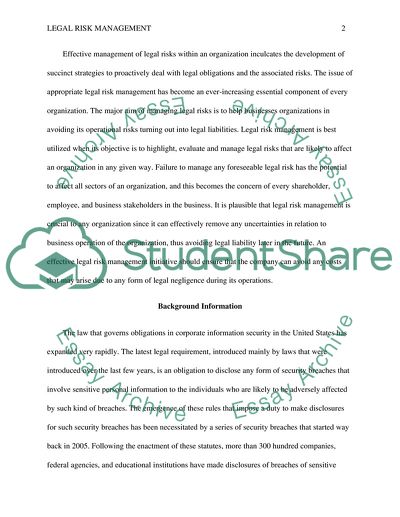Cite this document
(“Legal risk manager Assignment Example | Topics and Well Written Essays - 2000 words - 1”, n.d.)
Legal risk manager Assignment Example | Topics and Well Written Essays - 2000 words - 1. Retrieved from https://studentshare.org/law/1656107-legal-risk-manager
Legal risk manager Assignment Example | Topics and Well Written Essays - 2000 words - 1. Retrieved from https://studentshare.org/law/1656107-legal-risk-manager
(Legal Risk Manager Assignment Example | Topics and Well Written Essays - 2000 Words - 1)
Legal Risk Manager Assignment Example | Topics and Well Written Essays - 2000 Words - 1. https://studentshare.org/law/1656107-legal-risk-manager.
Legal Risk Manager Assignment Example | Topics and Well Written Essays - 2000 Words - 1. https://studentshare.org/law/1656107-legal-risk-manager.
“Legal Risk Manager Assignment Example | Topics and Well Written Essays - 2000 Words - 1”, n.d. https://studentshare.org/law/1656107-legal-risk-manager.


